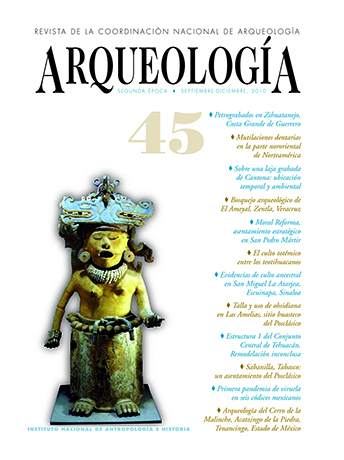Carve process and use of obsidian in Las Amelias, huasteco site in early Postclassic
Keywords:
obsidian, lithic and ceramic, Huasteca-Mexico-Las Amelias, Early Postclassic 900-1100 C. E.Abstract
From a rescue archaeological research with the problems and methodology relevant to this practice, an area was detected with unusual surface concentrations of obsidian, foreign use of the Huasteca area explored. Thus, their presence could help resolve questions about its size, marketing, distribution and consumption levels in place. The area is operated on the right bank of the Moctezuma River, its tributaries through basin above, was the most likely route through which obsidian came from the northern highlands to lowlands Hidalgo. Also, The Amelias is in the proximity of a larger settlement whose importance may have been related to the work process and distribution of volcanic glass, identifying specific features of specialized during the early Postclassic size. Thus, to locate the temporal and historical context of the site, spatial references are presented, the work and the analysis of lithic and ceramic materials of the site and, along with descriptions and images that accompany the text, provides information additional on this little known area of Huasteca.Downloads
Download data is not yet available.
Downloads
Published
2014-12-01
How to Cite
Martínez González, J., & Salazar Avendaño, C. (2014). Carve process and use of obsidian in Las Amelias, huasteco site in early Postclassic. Arqueología, (45), 120–159. Retrieved from https://revistas.inah.gob.mx/index.php/arqueologia/article/view/3493
Issue
Section
Artículos



